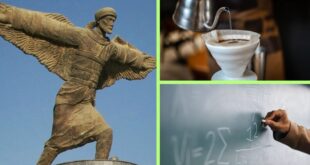This is how Salahuddin retook Jerusalem and shook the world.
Salahuddin Yusuf Ibn Ayyub is no doubt one of history’s greatest heroes. Both Muslims and non-Muslims alike praise his amazing accomplishments, as well as his shining qualities of bravery, generosity, and justice. From among his astonishing conquests, the capturing of Jerusalem from the crusaders is one that changed the history of the world.
 Salahuddin Al Ayubi
Salahuddin Al AyubiSalahuddin’s early life – the makings of a leader
Born in Tikrit, Iraq in 1137 AD, Salahuddin (or Salah Ad-Din) spent his childhood memorising the Quran, learning the Islamic sciences, as well as poetry. His father Ayyub was the governor of Baalbek. In his youth, Salahuddin learned his military tactics from his uncle, Asad Al-Din Shirkuh and was mentored by Sultan Nur Ad-Din, who inspired Salahuddin to unite the Muslim Ummah. Salahuddin went on to capture Egypt from the Fatimids, and Syria from the Zengids, uniting the Muslim lands together and became known as the Sultan of Egypt and Syria.
The Crusaders capture Jerusalem
The horror and bloodshed of the events known as the Crusades are today almost unimaginable. Occurring in the Middle-East between 1095 and 1291, these 9 church-sanctioned campaigns sought to “retake” the Holy Land from its Muslim occupants. After the siege of Jerusalem in 1099, the invading army took control of the city and indiscriminately slaughtered the Jews and Muslims they came across. Whilst it is impossible to know the exact figures, somewhere between 3,000 and 70,000 (most likely around 10,000) was butchered at the hands of the crusaders.
“The slaughter was so great that [Crusader] men waded in blood up to their ankles…” Gesta Francorum
Salahuddin defeats the crusaders
88 years later, however, Salahuddin had decimated the occupying armies, defeating the Crusaders at the decisive battle of Hattin in July 1187, when they attacked Muslim pilgrims. This eventually leads to the capturing of Jerusalem by Salahuddin a few months later in October 1187. To avoid the captivity they expected, the leader of the city Balian D’Ibelin threatened to slaughter his own people and destroy the city.
“We will kill our own women and children and burn all that we possess. We will not leave you a single dinar of booty, not a single dirham, not a single man or woman to lead into captivity. Then we shall destroy the sacred rock, al-Aqsa mosque, and many other sites; we will kill the five thousand Muslim prisoners we now hold.”
However, Salahuddin instead promised their security gave them 40 days to pay a small ransom to free themselves. The Crusaders accepted and surrendered the city unilaterally.
Salahuddin enters Jerusalem
During his victory of Jerusalem, he entered the city, not as a boastful conqueror, but with humility, just like the Prophet Muhammad (peace be upon him) did when he entered Makkah after the Muslim victory. Salahuddin was in a position to seek revenge on the very people that shed the blood of thousands of innocent Muslims during the 1st crusades. However, just like the Prophet Muhammad (peace be upon him) promised safety and peace to his aggressors, Salahddin also did the same to the Christians of Jerusalem. When he took the city, Salahuddin forbade any massacres or plundering of Christians, Frankish or oriental. He even strengthened the guards at their churches and gave them permission to return for their pilgrimages. He granted them forty days to safely leave the city, along with their property and belongings. Part of the conditions of surrender was to pay ransom for their freedom. Salahuddin set the ransom at a low price so everyone could pay, and for those who couldn’t, Salahuddin paid for their ransom from his own wealth. When the patriarch of the city took chariots full of gold, carpets, and precious goods from the city, Salah al-Din’s advisors were outraged.
“I said to the Sultan: ‘This patriarch is carrying off riches worth at least two hundred thousand dinars. We gave them permission to take their personal property with them, but not the treasures of the churches and convents.’ But Salah al-Din answered: ‘We must apply the letter of the accords we have signed so that no one will be able to accuse the believers of having violated their treaties. On the contrary, Christians everywhere will remember the kindness we have bestowed upon them.’
This amazing example is a testament to the character of Salahuddin, as well as his God-consciousness and forward thinking. It’s his generosity and justice that earned him the respect of his later opponent, King Richard the Lionheart during the 3rd crusades. As author Amin Maalouf described it:
“Saladin had conquered Jerusalem not to amass gold, and still less to seek vengeance. His prime objective, as he himself explained, was to do his duty before God and his faith.”
Despite ruling the vast lands of Egypt and Syria, he kept very little wealth for himself. When Salahuddin died in 1193 AD (age 56), he only had a few pieces of gold and silver to his name. With all his power and fame, he did not allow the temptations of this life to distract him from his goal of servicing Islam.
Post Disclaimer | Support Us
Support Us
The sailanmuslim.com web site entirely supported by individual donors and well wishers. If you regularly visit this site and wish to show your appreciation, or if you wish to see further development of sailanmuslim.com, please donate us
IMPORTANT : All content hosted on sailanmuslim.com is solely for non-commercial purposes and with the permission of original copyright holders. Any other use of the hosted content, such as for financial gain, requires express approval from the copyright owners.
 Sri lanka Muslims Web Portal Sri Lanka Muslims News Center
Sri lanka Muslims Web Portal Sri Lanka Muslims News Center
 Donate
Donate


